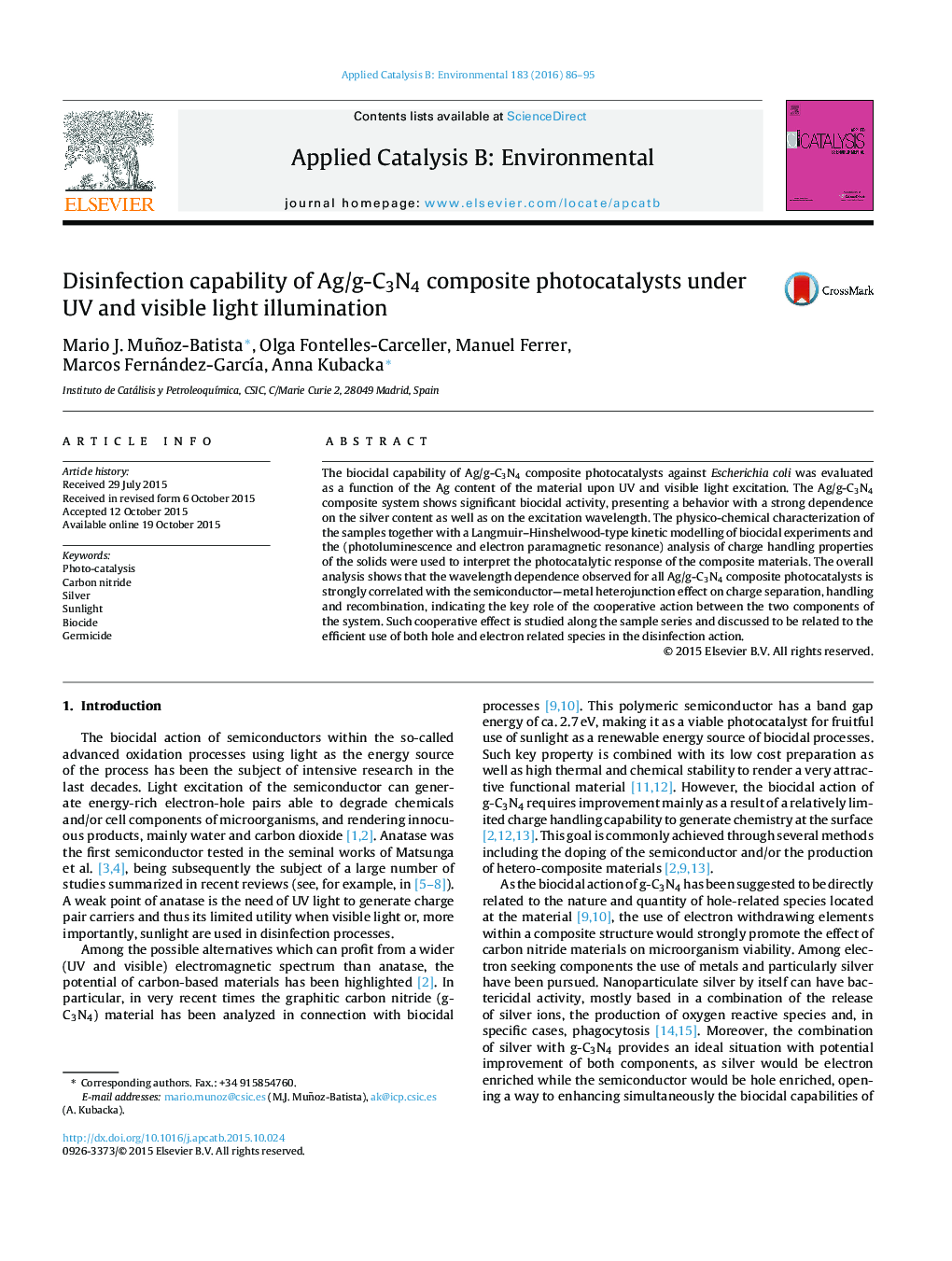| Article ID | Journal | Published Year | Pages | File Type |
|---|---|---|---|---|
| 45136 | Applied Catalysis B: Environmental | 2016 | 10 Pages |
•Combination of Ag and g-C3N4 biocidal properties in the composite system.•Modelling biological degradation under UV and visible light illumination.•Optimum performance controlled by interface effects in all conditions tested.
The biocidal capability of Ag/g-C3N4 composite photocatalysts against Escherichia coli was evaluated as a function of the Ag content of the material upon UV and visible light excitation. The Ag/g-C3N4 composite system shows significant biocidal activity, presenting a behavior with a strong dependence on the silver content as well as on the excitation wavelength. The physico-chemical characterization of the samples together with a Langmuir–Hinshelwood-type kinetic modelling of biocidal experiments and the (photoluminescence and electron paramagnetic resonance) analysis of charge handling properties of the solids were used to interpret the photocatalytic response of the composite materials. The overall analysis shows that the wavelength dependence observed for all Ag/g-C3N4 composite photocatalysts is strongly correlated with the semiconductor—metal heterojunction effect on charge separation, handling and recombination, indicating the key role of the cooperative action between the two components of the system. Such cooperative effect is studied along the sample series and discussed to be related to the efficient use of both hole and electron related species in the disinfection action.
Graphical abstractFigure optionsDownload full-size imageDownload as PowerPoint slide
